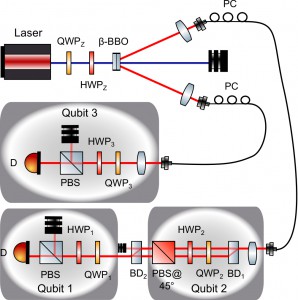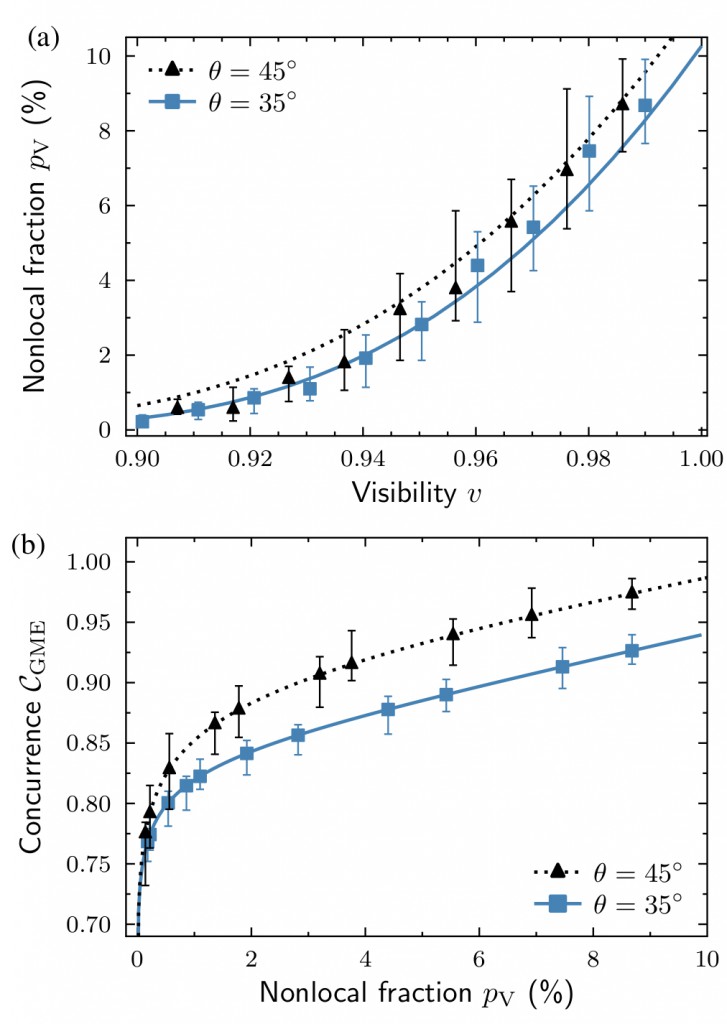
Entanglement of unsynchronized reference systems
In the recently published paper titled Measuring Concurrence in Qubit Werner States Without an Aligned Reference Frame, Phys. Rev. Applied 16, 054042 (2021), Kateřina Jiráková, Artur Barasiński, Antonín Černoch, Karel Lemr, and Jan Soubusta propose a method which allows quantifying the degree of quantum state entanglement using random and unknown measurement bases.
This is how the Authors explain their work:
A safe and infallible exchange of information has a great meaning in the whole world. Therefore a practical implementation of quantum information protocols beyond a scientific laboratory became one of the main fields of interest of scientists in recent years. Of course such progress in quantum communication methods requires performing quantum measurements in an unstable environment in which it is difficult to meet the strict requirements for synchronisation and calibration of remote devices. For instance, experiments on quantum communication over long distances or quantum satellite communication are usually based on quantum optical devices in which qubits are coded as light polarisation states. This however requires that the sender and receiver have a common reference system, allowing to correctly tune measuring devices. Moreover, such a system needs to be maintained in a stable way throughout the entire experiment or communication. Although maintaining a common reference system seems like a trivial assumption if it is limited to a laboratory, from the experimental point of view this requirement always entails an array of technical difficulties. For this reason, current experiments on quantum satellite communication unambiguously pointed to a necessity to reassess the validity of such an assumption.

In the paper Measuring Concurrence in Qubit Werner States Without an Aligned Reference Frame we propose a method which allows quantifying the degree of quantum state entanglement using random and unknown measurement bases. With such information we are able to evaluate the efficiency of the quantum communication process, and thereby correctly select a quantum communication protocol adequate to the prevailing experimental conditions.
The proposed method is based on estimating the probability of nonlocal fraction as an effect of measurements performed on remote sub-systems for randomly chosen (uniformly) observables (setups). The theoretical results obtained by us were experimentally verified. For this purpose we have constructed a measurement setting presented in fig. 1, implemented on a linear optics platform where qubits are encoded as spatial and polarisation states of single photons. The obtained results fully confirm compliance with theoretical predictions (fig. 2). Thereby, our result shows that, counterintuitively, measurements at random and unknown bases can be used to determine how entangled the quantum state is.

Added by: Joanna Molenda-Żakowicz
Dean’s representative for faculty promotion and media relations
